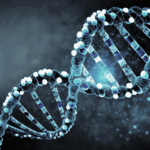A groundbreaking breakthrough has emerged in the field of medicine—scientists have successfully restored hearing in individuals born deaf using a single injection of gene therapy. This breakthrough isn’t just a hopeful experiment; it has the potential to transform millions of lives around the world.
Understanding Congenital Deafness: More Than Just Hearing Loss
Congenital deafness means being born with significant hearing loss or complete deafness. Often, this condition results from genetic mutations that affect how the ear and brain communicate. One such critical gene is called OTOF, which is responsible for producing a protein essential for transmitting sound signals from the inner ear to the brain. When this gene is faulty, the transmission breaks down, and hearing is severely impaired.
Unlike hearing loss caused by injury or age, genetic deafness is rooted deep within our DNA, making it particularly hard to treat. Until now, options like hearing aids or cochlear implants were the main solutions—they improve hearing by amplifying sound or electrically stimulating the auditory nerve but do not correct the underlying genetic issue.
The Magic of Gene Therapy: Fixing the Problem at Its Source
Gene therapy is a relatively new but rapidly advancing field that aims to fix or replace faulty genes. In this case, researchers at Sweden’s Karolinska Institutet devised a clever way to deliver a healthy copy of the OTOF gene right into the inner ear using a modified virus. Don’t worry—this virus is harmless and has been engineered specifically to carry and insert the good gene without causing illness.
Think of it as sending a tiny repair crew straight to the part of the ear that’s broken. Once the healthy gene arrives, it starts producing the necessary proteins, effectively restoring the pathway that lets sound signals travel from the ear to the brain.
Read more: New Dinosaur Discovery May Be the ‘Missing Piece’ in the Cancer Cure Puzzle
What Happened in the Study? Hearing Returned in Just One Month
The study involved ten patients—both children and adults—all of whom had hearing loss caused by mutations in the OTOF gene. Each participant received a single injection of the gene therapy directly into their inner ear.
The effects were remarkable. Within just one month, all ten participants showed significant improvement in hearing ability. For example, a seven-year-old child who was nearly completely deaf regained close to full hearing and could hold everyday conversations with family and friends—something that previously seemed impossible.
Even adults, who had lived with congenital deafness for years, experienced meaningful improvements, marking a powerful demonstration that gene therapy can work beyond early childhood.
Safety First: No Serious Side Effects Reported
A major concern with any new medical treatment is safety. In this study, the therapy was well tolerated by all patients. No serious side effects occurred, suggesting that the procedure could be a safe alternative to current treatments. This safety profile is encouraging, as it means gene therapy may be applied more broadly in the future.
Related Stories: Gene Therapy’s Growing Success Across Medicine
The success in treating genetic deafness is part of a remarkable wave of gene therapy breakthroughs that are reshaping modern medicine. These therapies go beyond traditional treatments by addressing the root cause of genetic disorders—mutated or missing genes—offering hope for cures rather than just symptom management. Here are some inspiring examples:
Blindness Reversed: A New Vision for the Visually Impaired
One of the most celebrated achievements in gene therapy has been its use in treating Leber’s congenital amaurosis (LCA), a rare inherited form of blindness that affects the retina. People with LCA often lose their sight early in life due to mutations in genes responsible for the function of photoreceptor cells, which detect light.
By delivering a healthy copy of the faulty gene directly into the retina via a harmless virus, scientists have been able to restore light sensitivity in these damaged cells. Some patients, who were nearly blind before treatment, have regained partial or even near-complete vision. This breakthrough has not only improved the quality of life for many but also demonstrated the incredible potential of gene therapy to repair complex sensory systems.
Read more: ‘Old People Smell’ Can Be Cured With This One Common Food, Experts Say
Spinal Muscular Atrophy (SMA): Changing the Course of a Devastating Disease
Spinal Muscular Atrophy (SMA) is a genetic disorder characterized by the loss of motor neurons, leading to muscle weakness and atrophy. Before gene therapy, SMA was often a fatal diagnosis in infancy or early childhood, with limited treatment options.
Gene therapy for SMA involves delivering a working copy of the defective SMN1 gene into patients’ cells, allowing the production of a protein critical for motor neuron survival. Babies treated early have shown dramatic improvements—many achieving developmental milestones like sitting up, crawling, and even walking, feats previously deemed impossible. This therapy has transformed SMA from a devastating disease into a manageable condition for many families.
Hemophilia: Toward a Future Without Frequent Injections
Hemophilia is a hereditary bleeding disorder caused by the body’s inability to produce enough clotting factors, proteins needed to stop bleeding. Traditional treatment requires frequent and lifelong infusions of these clotting factors, which can be burdensome and costly.
Gene therapy offers a promising alternative by delivering a functional gene that instructs the liver to produce these clotting factors naturally. Clinical trials have shown that a single gene therapy treatment can enable patients to maintain sufficient clotting factor levels, drastically reducing or eliminating the need for regular injections. This shift not only improves patients’ quality of life but also reduces healthcare costs and complications related to treatment.
Why This Matters: A New Frontier in Treating Genetic Deafness
This successful reversal of hearing loss marks a historic moment. It’s the first time a single injection of gene therapy has been shown to restore hearing in both children and adults with congenital deafness caused by the OTOF mutation.
This opens up exciting possibilities. Genetic deafness isn’t caused by just one gene—there are many others, like GJB2 and TMC1, responsible for the majority of hereditary hearing loss worldwide. Researchers are hopeful that similar gene therapies can be developed to target these other genes, potentially restoring hearing for millions more people.
The Bigger Picture: Gene Therapy’s Growing Role in Medicine
This breakthrough is part of a larger wave of gene therapy research that is changing how we treat many genetic diseases. From certain types of blindness to rare blood disorders, gene therapy offers a way to correct the root cause rather than simply managing symptoms.
The success of this hearing restoration study highlights the potential of gene therapy as a precise and effective treatment. It also underscores the importance of preserving genetic diversity and supporting ongoing scientific research, as the genetic clues found in our DNA hold the key to many future cures.
What’s Next? Expanding the Reach of Gene Therapy
While this study is a major success, there’s still more work to be done. Researchers plan to refine the therapy, test it on more patients, and develop treatments for other genetic forms of deafness.
In addition, long-term studies will be important to see how lasting the hearing improvements are and to monitor any delayed side effects. Scientists are also exploring how to make the delivery of gene therapy even safer and more efficient.
A New Hope for Millions
For millions of people born with genetic hearing loss, this breakthrough represents a beacon of hope. It’s not just about hearing sounds—it’s about connecting with the world, engaging in conversations, enjoying music, and experiencing life more fully.
This new gene therapy shows that what once seemed impossible is now within reach. As science continues to advance, the dream of curing genetic deafness for everyone may soon become a reality.










